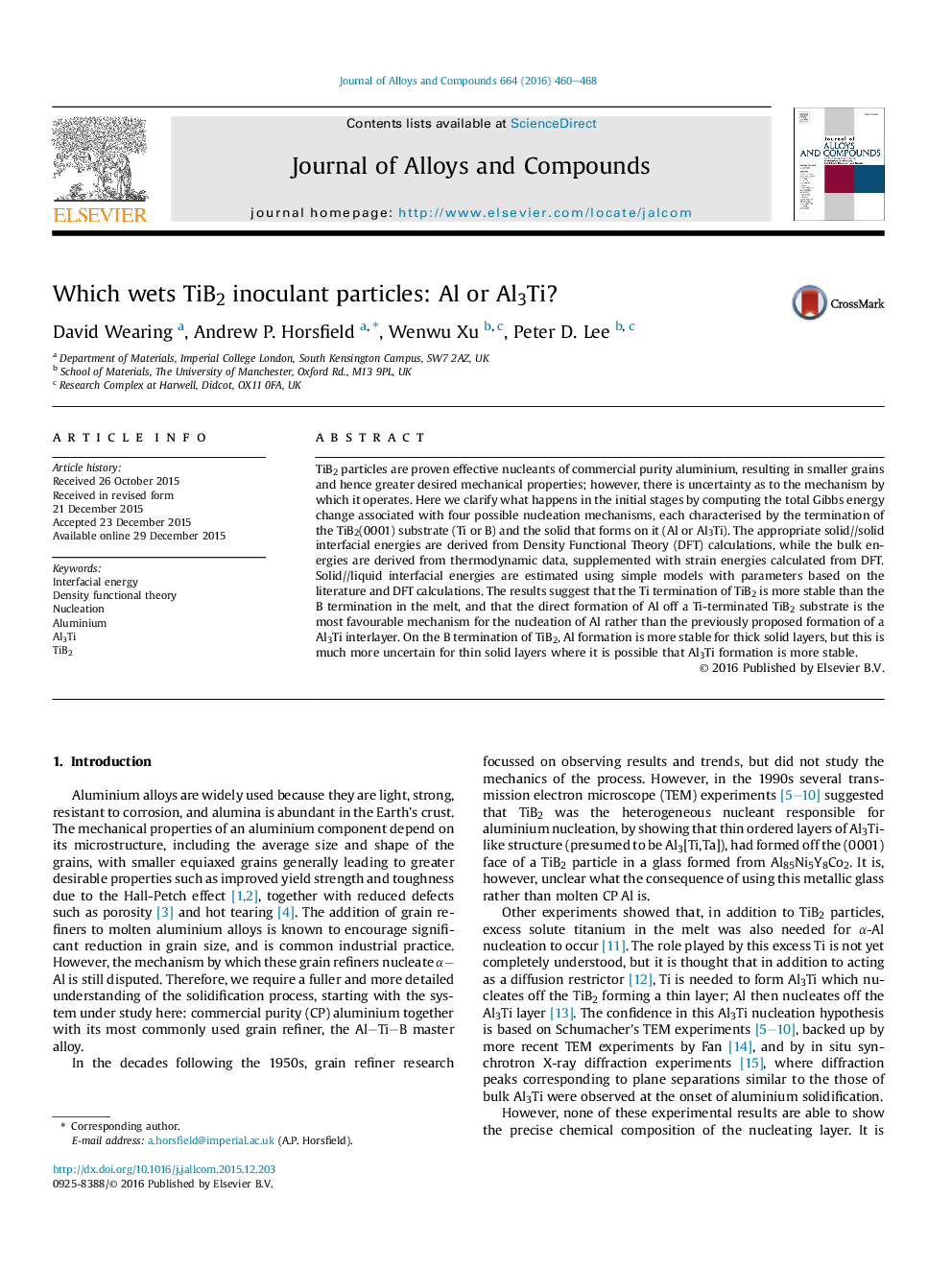| کد مقاله | کد نشریه | سال انتشار | مقاله انگلیسی | نسخه تمام متن |
|---|---|---|---|---|
| 1607164 | 1516229 | 2016 | 9 صفحه PDF | دانلود رایگان |

• TiB2(Ti)//Al interfacial energy is significantly reduced when xy strain is removed.
• TiB2(Ti)//Al3Ti interfacial energies are calculated for the first time.
• On the TiB2(Ti) substrate, Al forms a more stable interface than Al3Ti.
• On the TiB2(B) substrate, thin layers of Al3Ti form a more stable interface than Al.
• Aluminium nucleation is proposed to occur directly off Ti-terminated TiB2.
TiB2 particles are proven effective nucleants of commercial purity aluminium, resulting in smaller grains and hence greater desired mechanical properties; however, there is uncertainty as to the mechanism by which it operates. Here we clarify what happens in the initial stages by computing the total Gibbs energy change associated with four possible nucleation mechanisms, each characterised by the termination of the TiB2(0001) substrate (Ti or B) and the solid that forms on it (Al or Al3Ti). The appropriate solid//solid interfacial energies are derived from Density Functional Theory (DFT) calculations, while the bulk energies are derived from thermodynamic data, supplemented with strain energies calculated from DFT. Solid//liquid interfacial energies are estimated using simple models with parameters based on the literature and DFT calculations. The results suggest that the Ti termination of TiB2 is more stable than the B termination in the melt, and that the direct formation of Al off a Ti-terminated TiB2 substrate is the most favourable mechanism for the nucleation of Al rather than the previously proposed formation of a Al3Ti interlayer. On the B termination of TiB2, Al formation is more stable for thick solid layers, but this is much more uncertain for thin solid layers where it is possible that Al3Ti formation is more stable.
Journal: Journal of Alloys and Compounds - Volume 664, 15 April 2016, Pages 460–468